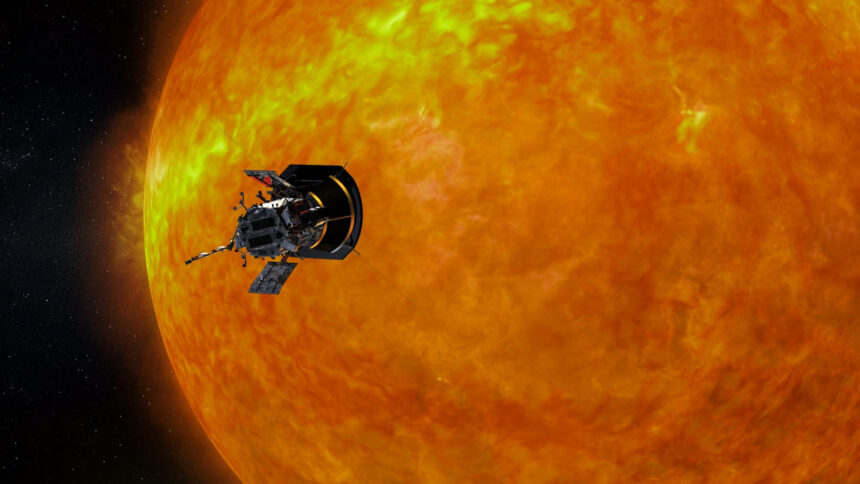The Parker Solar Probe made history by achieving the closest-ever approach to the Sun. On December 24, 2024, the uncrewed spacecraft flew within 3.8 million miles (6.1 million kilometers) of the solar surface. This unprecedented milestone is part of NASA’s mission to answer some of the Sun’s biggest mysteries, such as the origins of solar wind and why the Sun’s outer atmosphere, the corona, is significantly hotter than its surface.
What’s Happening & Why This Matters
The Parker Solar Probe is the first spacecraft to “touch the Sun” by flying through its corona, sampling particles and magnetic fields. As the fastest human-made object, traveling at 430,000 miles per hour, the spacecraft has already provided valuable insights into solar phenomena that affect Earth’s space weather. With its unique carbon foam shield capable of withstanding extreme temperatures up to 1,800°F (980°C), the spacecraft is well-equipped to handle the Sun’s intense heat.
This flyby is crucial as it brings scientists closer to understanding the causes behind coronal mass ejections (CMEs), which can impact satellite communication, power grids, and even air travel. The data from Parker will help researchers predict solar storms and better understand their effects on technology. As Helene Winters, project manager for the Parker Solar Probe, stated, “Parker Solar Probe is changing the field of heliophysics.”
TF Summary: What’s Next
The Parker Solar Probe’s mission is still ongoing, with its closest flybys expected to continue through 2025. The data collected from these flybys will deepen our understanding of solar activity, paving the way for better solar weather prediction models. This could have profound implications for space weather forecasting and its impact on technologies that rely on satellite communications.
— Text-to-Speech (TTS) provided by gspeech


